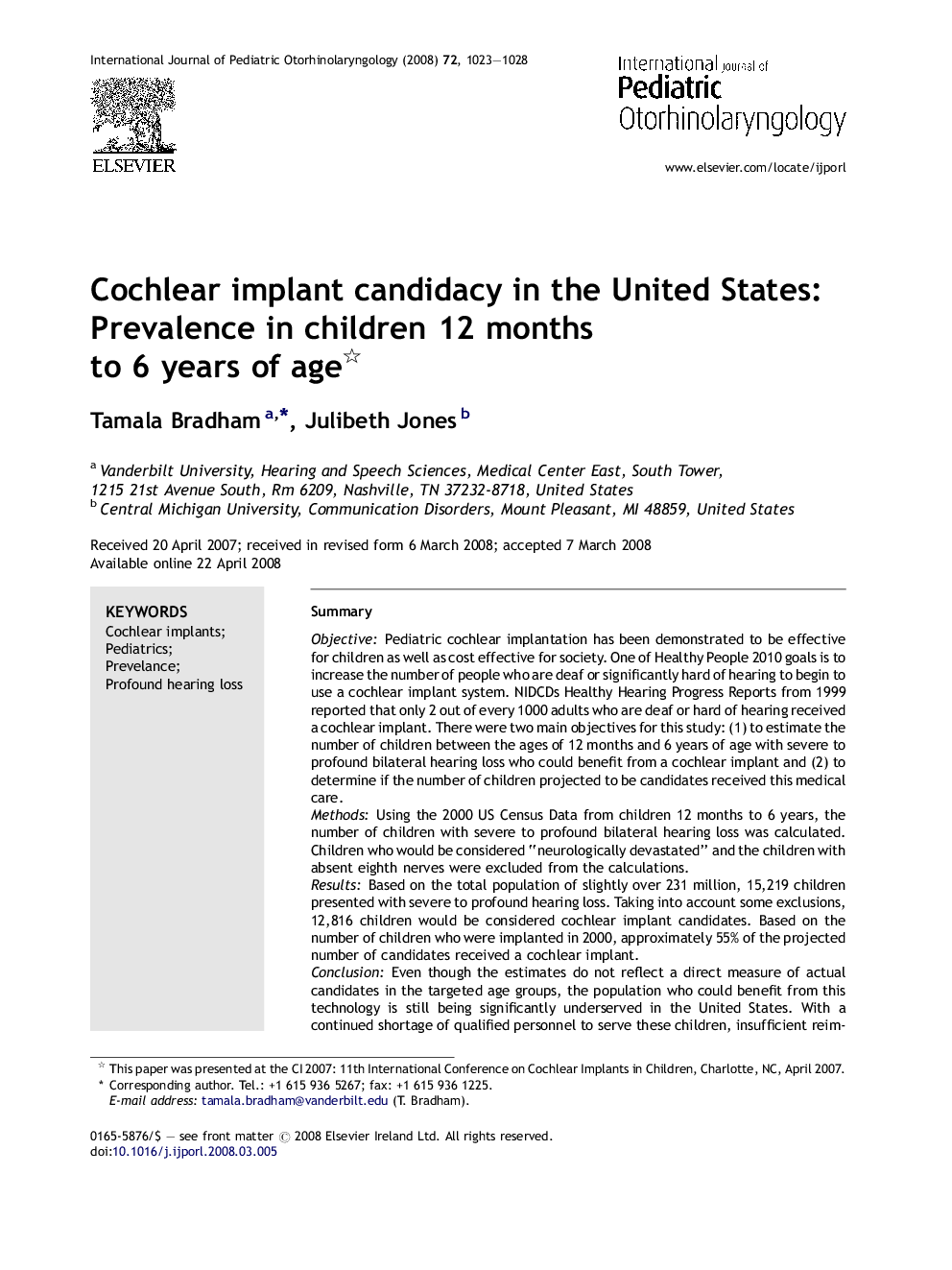| Article ID | Journal | Published Year | Pages | File Type |
|---|---|---|---|---|
| 4115036 | International Journal of Pediatric Otorhinolaryngology | 2008 | 6 Pages |
SummaryObjectivePediatric cochlear implantation has been demonstrated to be effective for children as well as cost effective for society. One of Healthy People 2010 goals is to increase the number of people who are deaf or significantly hard of hearing to begin to use a cochlear implant system. NIDCDs Healthy Hearing Progress Reports from 1999 reported that only 2 out of every 1000 adults who are deaf or hard of hearing received a cochlear implant. There were two main objectives for this study: (1) to estimate the number of children between the ages of 12 months and 6 years of age with severe to profound bilateral hearing loss who could benefit from a cochlear implant and (2) to determine if the number of children projected to be candidates received this medical care.MethodsUsing the 2000 US Census Data from children 12 months to 6 years, the number of children with severe to profound bilateral hearing loss was calculated. Children who would be considered “neurologically devastated” and the children with absent eighth nerves were excluded from the calculations.ResultsBased on the total population of slightly over 231 million, 15,219 children presented with severe to profound hearing loss. Taking into account some exclusions, 12,816 children would be considered cochlear implant candidates. Based on the number of children who were implanted in 2000, approximately 55% of the projected number of candidates received a cochlear implant.ConclusionEven though the estimates do not reflect a direct measure of actual candidates in the targeted age groups, the population who could benefit from this technology is still being significantly underserved in the United States. With a continued shortage of qualified personnel to serve these children, insufficient reimbursement rates, and disparities in implantation rates based on ethnicity and socioeconomic status, the question remains can we truly meet the needs of these children?
